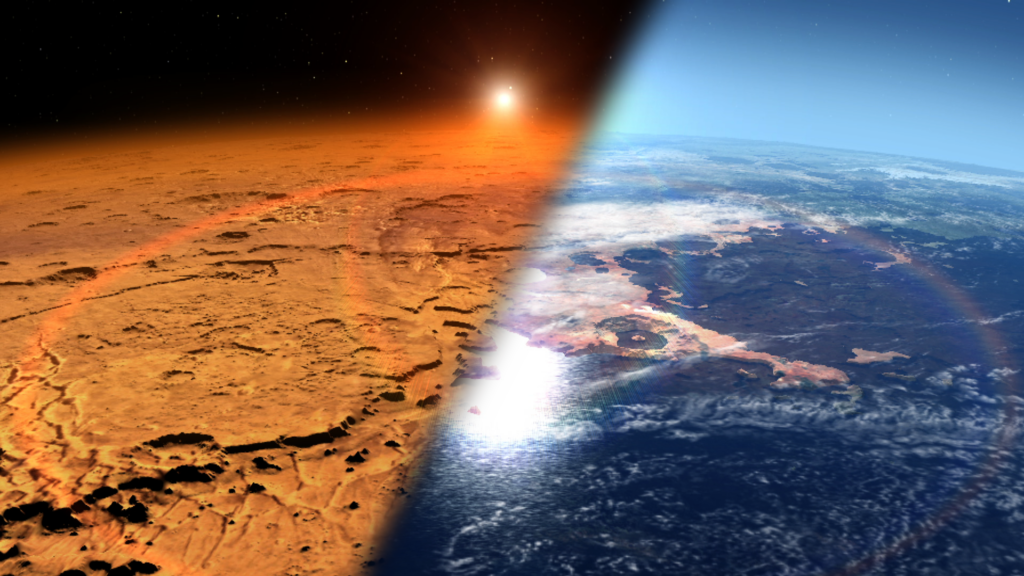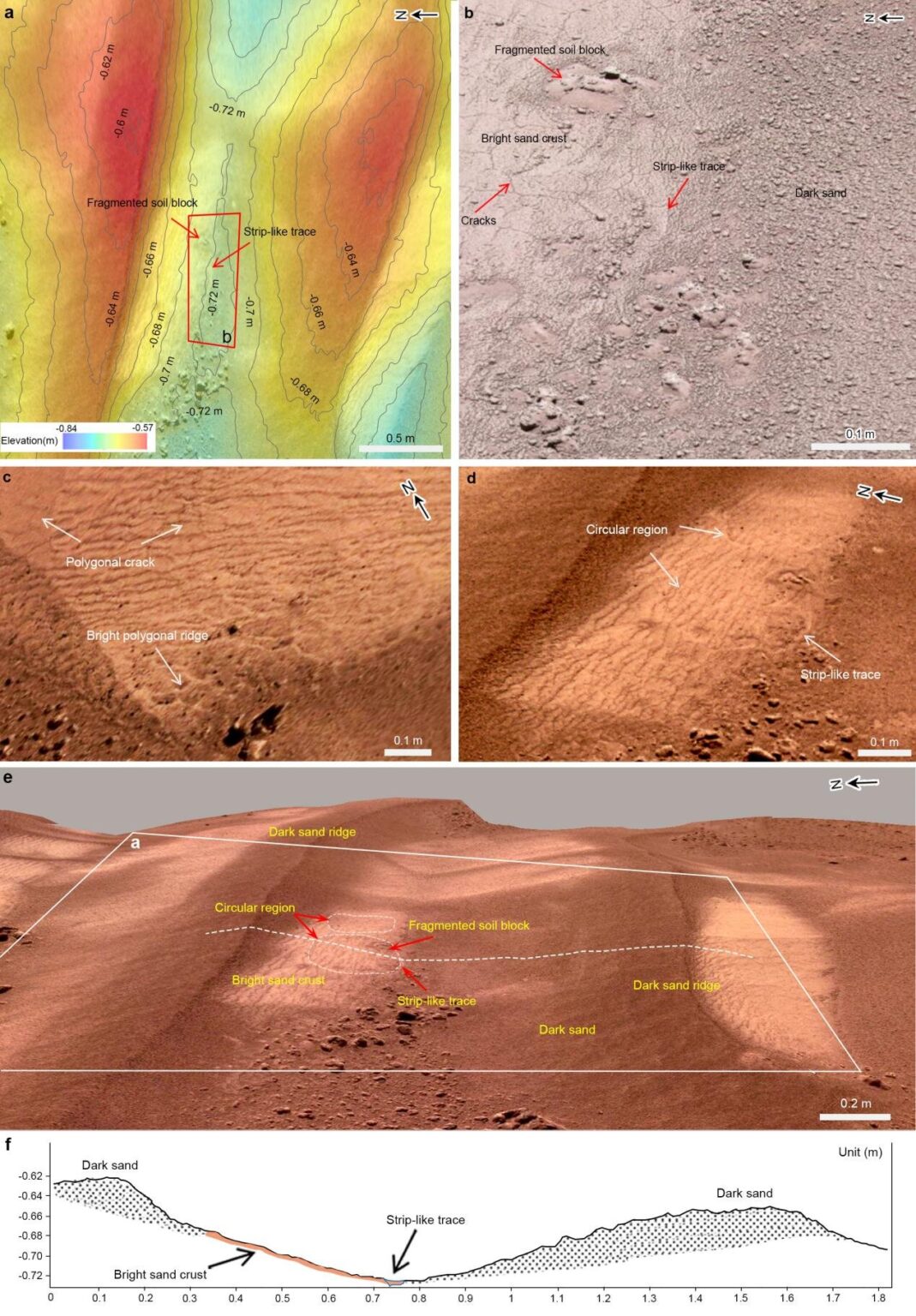The Chinese Zhurong rover has found traces of recent, by astronomical standards, salt water flows on Mars. They flowed on the surface of the Red Planet only 0.4 – 1.4 million years ago.
Water on Mars
The data collected by the spacecraft irrefutably proved that in the distant past Mars was completely different from the arid world we were used to. Rivers flowed on the surface of the planet and there were permanent lakes that left behind powerful traces of sedimentary deposits. But over time, this picture has changed. Mars has lost most of its atmosphere, and with it, water. It is believed that its remains have been preserved in the form of water ice deposits, mainly concentrated under the poles of the planet.

At the same time, climate models allow that under certain circumstances, liquid water can still appear on some areas of the Martian surface. However, until recently, scientists had no confirmation of this hypothesis. But the data collected by the Chinese Zhurong rover may make the scientific community reconsider this point of view.
Finding of the Chinese rover
A recent issue of the journal Science Advances published an article by researchers from the Chinese Academy of Sciences on the existence of liquid water on Mars. It is based on data collected by the Zhurong rover.

In the course of its movement across the Utopia plain, the rover discovered several dunes with crescent-shaped morphology, which were formed under the influence of wind. In some places there is a bright crust on them, covered with a network of characteristic cracks. Spectral analysis has shown that it is rich in minerals associated with solar water. In addition, a light strip-like trace with a length of more than 40 cm and a width of 1.5 cm was found near one of the dunes.
According to the researchers, the traces found by the Zhurong rover were formed by water flows that flowed between 0.4 and 1.4 million years ago. Most likely, it was formed as a result of the melting of frost or snow. The find is important. It suggests that even now there may be water and liquid water on Mars. This, in turn, may affect existing estimates of the probability of the existence of life on the Red Planet.
Recall that despite all the efforts of engineers, the Zhurong rover has not yet come out of hibernation mode, which it entered in May 2022.
According to https://phys.org
Follow us on Twitter to get the most interesting space news in time
https://twitter.com/ust_magazine

